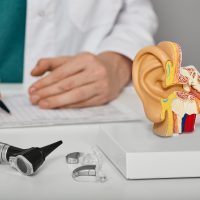An enlarged prostate, also known as benign prostatic hyperplasia (BPH), is a common condition that affects many men as they age. While an enlarged prostate can cause bothersome urinary symptoms, there are various management strategies that can help alleviate the symptoms and improve quality of life. In this article, we’ll explore some effective ways to manage an enlarged \prostate.
- Lifestyle Modifications
Making certain lifestyle modifications can have a significant impact on managing an enlarged prostate. Here are some strategies to consider:
a. Watch Your Fluid Intake: Limiting the amount of fluids you consume, especially before bedtime, can help reduce the frequency of nighttime urination and minimize urinary symptoms.
b. Avoid Triggering Beverages: Limit or avoid caffeinated and alcoholic beverages, as they can irritate the bladder and worsen urinary symptoms.
c. Stay Active: Regular physical activity, such as brisk walking or cycling, can improve overall health and may help alleviate urinary symptoms associated with an enlarged prostate.
d. Maintain a Healthy Weight: Excess weight can put additional pressure on the bladder and worsen urinary symptoms. Maintaining a healthy weight through a balanced diet and regular exercise can help manage an enlarged prostate.
- Medications
There are several medications available that can help manage the symptoms of an enlarged prostate. Some commonly prescribed medications include:
a. Alpha-Blockers: These medications relax the muscles in the prostate and bladder neck, making it easier to urinate.
b. 5-Alpha Reductase Inhibitors: These medications can help shrink the prostate over time by reducing the production of dihydrotestosterone (DHT), a hormone that contributes to prostate growth.
c. Combination Therapy: In some cases, a combination of alpha-blockers and 5-alpha reductase inhibitors may be prescribed for more significant symptom relief.
It’s important to consult with a healthcare professional to determine the most suitable medication based on your specific condition and medical history.
- Minimally Invasive Procedures
In certain situations where medications aren’t providing adequate relief, minimally invasive procedures may be recommended to manage an enlarged prostate. These procedures aim to reduce the size of the prostate or improve urine flow. Some commonly performed minimally invasive procedures include:
a. Transurethral Microwave Thermotherapy (TUMT): This procedure uses microwaves to heat and destroy excess prostate tissue.
b. Transurethral Needle Ablation (TUNA): TUNA involves the use of low-level radiofrequency energy to heat and destroy excess prostate tissue.
c. Prostatic Urethral Lift (PUL): PUL involves the insertion of small implants to hold the prostate lobes apart, thereby reducing the pressure on the urethra and improving urine flow.
These procedures are generally performed on an outpatient basis and have shorter recovery times compared to traditional surgical interventions.
- Regular Follow-Ups
Regular follow-up appointments with your healthcare provider are essential for managing an enlarged prostate. These visits allow your doctor to monitor your symptoms, evaluate the effectiveness of any prescribed medications or treatments, and make any necessary adjustments to your management plan.
In conclusion, managing an enlarged prostate requires a comprehensive approach that incorporates lifestyle modifications, medications, and, in some cases, minimally invasive procedures. By adopting a healthy lifestyle, taking prescribed medications as directed, and maintaining regular communication with your healthcare provider, you can effectively manage the symptoms of an enlarged prostate and improve your overall quality of life. Remember, it’s important to consult with a healthcare professional for an accurate diagnosis and personalized management plan tailored to your specific needs.












